Thinking like a Drama Teacher
This process drama workshop is based on a visit I made to Xi Shi’s Hometown
in Zhuji 2019 when I was at the IDEAC Congress. I was inspired by the statues of the yarn washers and people of the village on the shores of the river. The tranquil atmosphere of the place inspired me to think about imaginatively exploring stories. This, in turn, led me to look at the story of Xi Shi as well as the traditional stories of Nü Wa.
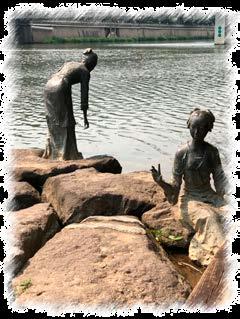
There are two Big Ideas to this workshop:
1) we learn drama by making drama
2) we learn to teach drama by reflecting on how we make drama.
By engaging with the processes of drama, taking on roles, exploring situations and tension, time, space, and symbol, we learn to express and communicate through drama. By reflecting on the structures and strategies used in the workshop we connect with possibilities for our own drama teaching. We understand ourselves as drama makers and as drama teachers.
A Process Drama Workshop as a springboard for drama learning. Robin Pascoe, 9th IDEAC International Drama Education Conference, Zhuhai, China. May 18-21 2023

Day 1
There are 8 parts to Workshop which runs for 12 hours in total over 2 days.

Workshop Notes
ActivAte your leArning
• During the workshop, take images (but don’t be too distracted from the drama making activities).
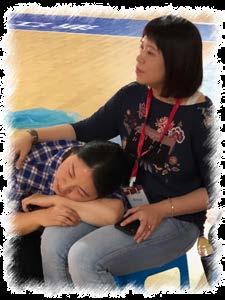
• Make notes.
• Make a note of your reasons for participating in this workshop.
• Reflect on how you have achieved your intended purpose through the workshop activities.
Drama StorieS aS Starting pointS for making Drama
One of the simpler definitions of drama is that through drama we tell stories. Drama as story relies on making and sharing meaning with others. The world is full of great stories. Many of them are useful for drama teachers. But not all of them. Our first role in planning drama based on stories is identifying source material that works for drama Where do we find stories for drama?
We find stories in: Our lives/ Our Traditions/ Our culture/ Our imagination. Our lives are stories. Our world is story. But not every story works for drama.
In considering stories for drama I look for:
• Interesting roles to explore 探索有趣的角色
• Interesting situations driven by tension that produces dramatic action 由产生戏剧性动
作的紧张局势驱动的情况
• Ways of using your whole bodies –movement, voice and mind 使用你整个身体
的方法——动作、声音和思想
Let us begin as we will continue, with a story.
a ShareD Story to begin
In 2019 (when I was last with you in China), on the day after the conference in Zhuji, a group of us went to Xi Shi’s hometown on the banks of the Huanjiang River. After the busy time of the conference, this was a quiet time of reflection. I was immediately inspired by the bronze statues of the silk yarn washers and the people of the village, the old man, the boy and the snow geese.
By the river there was a message tree, where many people had left written messages. As I walked, I imagined bringing the stories of this place to life through drama. Drama stimulates our imaginations and connects us with our immediate world through our senses of sight and sound and touch and taste and feel.
Drama starts with stories shared.
Each part of the workshop is focused on a story.
In Part 1 our Process Drama begins with a shared story about the Yarn Washers of the Xi Shi Village.
Each Day the Yarn Washers walk to the river side, carrying their lengths of yarn. They take allotted places on the rocks.
Some work beating the coarse strands to make them finer.
Others sift and pull at the soft fabric to make it smooth.
The running water, cleans and sweetens the fabric.
By the River, the yarn washers work –carrying on the traditions of generations. The work of their mothers and grandmothers. They work together to the rhythms of the heartbeat.
The washing and scrubbing of rough textures, hard on their red fingers, waterlogged and dripping.
The wringing of long waves of wet yarn. The lofting and folding of fabric. Catching the air in billows to dry it.
The river is peaceful.
But some days hard words are spoken.
“Work faster,” says the person in charge.
There was a sudden cry from the river bank. One of the Yarn washers. Her feet on the slippery rocks. Her arms flailing in the air. A look of terror on her face.
The Yarn Washers devised a plan
Using lengths of fabric
And strong reeds from the river bank.
As the Yarn Washers returned to their homes, they each stopped by the message tree and wrote a message.
ActivAte your leArning
• Identify how and why these stories have potential for creating dramatic action.
In Part 2 we create a drama world around a story of the Village.
By the River, the yarn washers share lives. They spend time sitting in the sun combing their hair, singing songs, sharing stories.
What are the stories they could tell?
They tell stories of the four beauties and the one dearest to their hearts, the famous Xi Shi.
By the river, they tell stories of the discovery of silk when Xi Ling-shi 西陵氏 walking in her garden when a silkworm cocoon fell into her tea.
By the river, they tell stories of the Silk Road. They tell stories of how the secret of silk making was stolen.
By the river, there is village. The yarn washers live there.
But there are other people of the village.
Who else lives in this village?
Who are the other people in this village?
One afternoon as the Old Man dozed in the Winter sun, the Boy slowly, silently crept towards him.
He had mischief in his eyes. He planned a prank on the Old Man dozing.
What could it be?
Creeping closer, with an impish grin
On his face.
Hah!
The woman feeding the chickens takes swift action.
She grabs the boy by the ear.
She drags him to the village square calling everyone to witness his actions.
The people of the villages decide to have a town meeting about the Boy.
Let us ask the Old Man what he thinks.
What shall we do about the Boy?
The people of the village must make a decision about the Boy.
In Part 3 we are Posing a Drama Problem: The Boy and the Snow Goose
The Boy from the village is feeling angry and sad.
He thinks no one in the village likes him. With angry feet he stomps down the steps towards the river.

The people of the Village gather by the well. As they work, they tell each other about the Boy.
But then The Boy saw a butterfly, light as air, flutter by.
And then he saw a snow goose, proud and strong. It spread its wings wide and honked. The Boy rushed on down the stairs, past Yarn Washers who shouted and called as he tumbled by.
Fearing the wrath of the villagers, the boy hid by the bank of the river.
Then he saw it. A boat.
A beautiful boat.
The most beautiful boat ever made. And he knew, in his heart, that this boat was made for him.
The Snow Goose landed on the prow of the boat beside the Boy.
Standing proud, the Boy and the Snow Goose are carried on the flow of the river.
In Part 4 we start a story with an unfinished ending
The Old Man watched.
The Boy was in trouble many times.
The Old Man watched.
The Boy was in trouble many more times.
One day the Old Man called the Boy to him and they sat in the sun in the village square. The Old Man told an old story…

The Boy and the Snow Goose moved down the river unaware that the clouds were gathering in the sky.
On the riverbank, in the rain, yarn washers see the boy and the snow goose and the boat on the river in the storm. They call the people of the village
As the people on the river bank watched
Through the rain that followed the storm, the boy and the boat slowly disappeared from their eyes.
By the river there is a message tree. As each member of the Village turned for home
They stood beneath the tree and wrote a message.
In Part 5 we focus on the story of Xi Shi
By the river, the beauty Xi Shi washed silk. She brushed her silken hair

Gazed into the waters and sang. Create that moment by the river.
Dazzling beauty
Her singing and beauty drew the fish to the surface of the water.
They were dazzled by seeing Xi Shi. In amazement they sank to the bottom of the river again.
By chance, walking by the river, deep in thought, was Fan Li.
He had many worries burdening his mind. He was worried and sad.
The Kingdom of Yue had been defeated by King Fuchai, 夫差, of the Kingdom of Wu.
Gou Jian, 勾踐, the King of Yue, was humiliated.
The sweet voice of Xi Shi lifted his spirits.
Xi Shi was taught the manners of the court.
She was taught to move with grace.
She was taught the art of making tea. She was taught the secrets of smooth conversation and flattery.
It is time for Xi Shi to enter the Kingdom of Wu.
But it is difficult for her to leave Yue. She and Fan Li have fallen in love.
Xi Shi meets with Fan Li one last time. They meet in the pavilion by the pond. Although successful, Xi Shi was sad in the Kingdom of Wu
In the Kingdom of Wu, Xi Shi was so stunning that King Fuchai lost his sense.
He built the Guanwa Palace for her so lavish that pearl strands hung to shade the windows.
King Fuchai also built the “Promenade of Musical Shoes” where underneath the marble floors, there were thousands of earthenware jars that sounded like chimes every time she walked or danced on it. But still she was troubled.
After the Kingdom of Wu is defeated. Fan Li and Xi Shi were reunited.
There are different stories told of what happened to them.
Some say that they lived near Lake Tai where Fan Li became a merchant. Others say that King Gou Jian drowned Xi Shi in a lake because he was afraid that he too would be swayed by her beauty
Yet others tell the story that Fan Li and Xi Shi sailed into their lives on a boat on a misty lake and were never seen again
In Part 6 of our workshop we move to linking into traditional stories.
On a distant mountain top at the dawn of time
The mountains rolled in the mists
The river flowed swiftly to the glittering sea. The beautiful god Nü Wa breathed deeply looking to the heavens and felt the warmth of the sun.
Nü Wa was lonely. She looked into the still waters And saw a reflection of herself. Her only companion was her reflection in the water.
The only companions for Nü Wa were the birds, the fish and the butterflies
Nü Wa decided that she would fashion a creature in my own image.
She picked up the clay from the river bank and began to mould a person.
Nü Wa was pleased with what she had created.
But she saw that these humans had much to learn.
They had to learn to move and walk. They had to learn to think and talk.
Nü Wa was pleased with what she had created.
She made many more by casting the clay from the river bank into the world.
She lead her new companions on the earth in a dance.

In Part 7 we look at the story of Nü Wa mending the Heavens.
The people of Clay lived many years in harmony until one day there appeared a god in heaven names Zhuan Xu 祝融 who ruled the northern universe with fire.
And there also appeared another god, Gong Gong, 龔工 the god of water who brought floods and destruction
The people of clay were tossed and turned. Their villages were destroyed. Their lives were in turmoil.
The Mountain that supports the Heavens is destroyed.
The two warring gods in their fury, destroyed the pillar that held up the sky.
Nü Wa searched for five coloured stones. She melted stones of the five colours to repair the heavens.
It took much effort.
But slowly, patiently, Nü Wa lifted the melted stones and mended the heavens.
Many years, decades, centuries pass but still the people of clay gather each year to tell the story of Nü Wa mending the heavens.
In Part 8 there is time to add to an earlier story. Many years later,
A young man walked into the Village. He was strong and healthy.
The Old Man, his eyes clouded with cataracts
Could not believe his eyes at first
The Old Man slowly walked to the message tree
Drinking in the sounds of the river flowing
Time flowing
He reached up.
His ancient rheumy eyes
Searched the tattered messages
Until he found one particular message
Faded to the point of being unreadable. He took it down and handed it to the Boy
Who was now a Man.
Ideas for Drama Thinking – A Process Drama Approach
WhAt is Process DrAmA?
In this workshop we are developing a Process Drama which provides one entry point for learning drama. The workshop is structured as an extended series of linked drama experiences given coherence through narrative; interspersed within the structure are opportunities for active reflection and connection to future practice (Schön, 1983).
hoW Process DrAmA Works
Process Drama uses improvisationally- based explorations within the frame of a series of negotiated structured episodes working with the Elements of Drama (ACARA, 2022). Working collaboratively teacher/leader and participants/actors physically, cognitively, and emotionally explore people and stories working with the conventions and strategies offered by drama/theatre for an underlying educational purpose.
In a Process Drama workshop, participants are simultaneously actors and audience. They work within the tension between enacting imagined action and their personal and collective physical presence in the workshop. This metaxis (after Boal, 1993; Pascoe, 2020) provides a “heightened state of consciousness” through working physically, cognitively and emotionally with the Elements of Drama.
Through working with role, relationships, situations, action, tension, voice and movement, space and time, language and symbol, mood and atmosphere, and audience, participants learn the distinctive properties of drama in practice.
Through participating in Process Drama, we learn drama. We learn how drama makes and shares meaning and how experiences are expressed and communicated. Through shaping and forming ideas through enactment, sharing them through performing and reflecting on them and through responding, we learn the concurrent dynamics of drama as artists and audiences.
strAtegies
Process Drama relies upon the effective use of a range of drama learning and teaching strategies, sometimes known as conventions (Neelands & Goode, 2000). They connect with the rich repertoire of theatre handed down from generation to generation in the art form.
Opportunities are provided by Process Drama for learning through heightened aesthetic engagement. Three core drivers ignite aesthetic engagement: narrative, role and tension (Pheasant, 2015). In Process Drama the purposeful use of productive tension (Cecily O’Neill, 2014, drawing on ideas from Heathcote) powers embodied engagement. Tensions of character, relationships, task, time and surprise can be managed to explore the narrative (Haseman & O’Toole, 2017).
In Process Drama participants have dual roles of been artist and audience simultaneously. They metaxically engage in active reflective and reflexive learning. There is a dual state of awareness, what Maxine Greene (1995)called a ‘wide awakeness’, and active embodied transformation.
ActivAte your leArning
• Create an info-graphic explaining key features of Process Drama.
• Prepare a briefing for your Principal/school about how Process Drama enables students to learn drama.
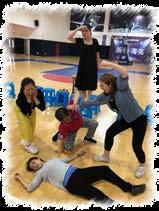
Workshop Notes
WhAt Are the elements of DrAmA? AnD Why Are they imPortAnt?
In this workshop we are working in Process Drama through using the Elements of Drama which provides further entry points for learning drama.
ActivAte your leArning
• Make a poster for your students about the Elements of Drama

DrAmA teAching & leArning strAtegies
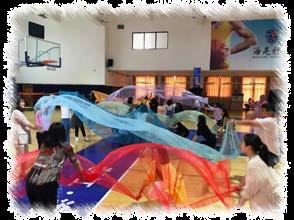
Drama Teaching and Learning Strategies are building blocks for planning drama lessons. An important part of Drama Thinking is to match strategies to the learning moments in the Process Drama workshop.
To activate the Elements of Drama we use a series of Strategies (sometimes called Conventions after the work of Neelands and Goode).
ActivAte your leArning
• Identify the Strategies used in this Process Drama workshop.
• Build a handbook of Drama Teaching and Learning Strategies. Outline:
• What you do as teacher
• What students do in this strategy

• The learning purpose
• The Elements of Drama addressed.
• Teach another drama teacher about a specific strategy.
Ideas for Drama Thinking –Planning is Drama Thinking
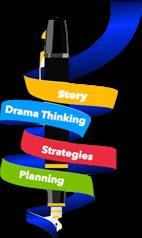
Planning for Drama begins with Drama thinking.
DrAmA thinking before DrAmA PlAnning
There are many different starting points for teaching drama. This workshop is designed to share one way – the way that I have developed drama thinking and planning over time and through experience.
Rather than beginning with specific strategies or even ways of putting ideas down on paper, I begin by focusing on the thinking that underpins the pragmatic decisions and choices we make before we step into our drama workshops.
Teaching drama is about thinking AND doing.
The thinking we do in our planning processes, shapes the choices we make. The teaching – the doing – informs our thinking.
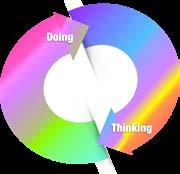
Appropriating Costa and Kallick’s (2000-2001) popular idea, teaching drama is about bringing into play habits of mind. Habits of Mind provide the framework for developing ways of thinking about problems and situations. These Habits of Mind include ways o thinking about thinking (meta-cognition) developing empathy through listening and understanding, asking questions, communicating clearly, using our senses to inform, creating, imagining and innovating drawing on past knowledge in new situations and flexibility (https://www.habitsofmindinstitute.org/learningthe-habits/).
DrAmA thinking
When you’ve done something for a long time, you overlook the processes that have become second nature or habit. I was reminded of this by a question from a student: how do you go from a story or idea to a drama lesson based on that story?
Underpinning this question is about the whole drama planning process. What are the intermediate steps between your idea for a drama exploration or the source material and the detailed planning that we take into our drama workshop?
In overview to get from story to plan we use some Drama Thinking linked with specific Drama Teaching and Learning Strategies. From this process emerges a plan for a drama class.
What do I mean by Drama Thinking?
Drama Thinking is the process where you take apart a story or drama stimulus idea to see how it can work for a drama lesson.
• What are good stories for drama?
• Which pieces of the story have drama potential?
• Which will be useful for generating the drama learning that you hope for?
Drama Thinking is about how you think as a drama teacher.
Drama thinking is a term I gladly borrow from Norah Morgan and Jualiana Saxton, (1989) I am also reminded of Peter Duffy’s book A Reflective Practitioner’s Guide to (mis)Adventures in Drama Education – or – What Was I thinking? (2015)– (my emphasis).
•
Why Do We teAch DrAmA in schools?
Drama Education has rich potential offering at least four ways of including it in learning
1. Drama can be a curriculum subject in its own right.
2. Drama can be a cross curricular method.
3. Drama can be an extracurricular activity.
4. Drama can build life skills such as communication and confidence.
In curriculum drama students are making and responding to drama, to discover the basic elements of the art form and to learn to manage and control them.
In cross curricular drama teachers use drama to support learning in other curriculum subjects.
In extracurricular drama, there are opportunities for whole school activities beyond classroom subjects that build cohesion, identity and spirit.
Drama for life skills such as communication, confidence building and developing presentation skills draws on aspects of drama. Each approach has value.
DrAmA leArning
We learn about drama and we learn through drama.
We learn about how we make and respond to drama. Through that we also learn about the purpose and value of drama in shaping communities, sharing stories and knowledge and wisdom. Drama can also be a vehicle for other learning. Drama can be used as a way of learning about other subjects (for example, look back in the workshop to where, drama has explored history such as the discovery of silk).
Working in drama can also develop important life skills such as confidence, communication and presentation skills.
Drama can also serve whole school aims such as building community spirit, cohesion and identity. That usually involves activities such as whole school productions. These approaches are compatible with my understanding of the Arts Curriculum Standards (2022) by the Ministry of Education.
Drama in education serves a range of purposes.
Process DrAmA AnD ProDuct DrAmA

In broad terms drama education builds on two traditions: Process Drama and Product Drama. In Process Drama the focus is Improvisational. The purpose is learning through participatory and collaboratively developed, teacher led explorations.
ActivAte
In Process Drama Participants are simultaneously Artist and Audience. There is no external audience. Product Drama is script based and performed for an audience. It is most often teacher directed. In Product Drama artist and audience are in parallel experiences.
In these workshops we are working with Process Drama for two related purposes. Firstly, you are learning about making drama. Through making drama we are also focusing on how we teach drama.
your leArning
Prepare a presentation for parents outlining the approaches to drama used in your school.
Workshop Notes
WhAt Do We leArn in DrAmA?
This is a challenging question.
Before you read on, take a moment to reflect on your answer to this question. Some ideas that might help.
When we learn drama we learn about:
• Our Self: We learn out who we are physically, socially and emotionally
• Others: we learn about our social and cultural identity
• The Art form of Drama in culture
• Listening & Reacting
• Moving in space, time and energy
• Teamwork collaborating
• Audience
hoW Do We teAch so others
leArn DrAmA?
In your own words - to your partner –share your ideas about how we teach Drama?
There are many ways – this workshop is one. But there are some useful general principles to keep in mind.
Learning Drama needs to be:

• Active
• Embodied
• Physical, Cognitive, Social, Engaging Emotions
• Practical
• Experiential
• Shared & collaborative

• Reflective & Reflexive – questioning practice
In your own words explain how do we teach so others learn Drama?
ActivAte your leArning
• Outline the ways that students learn in drama and through drama.
• Make a reminder chart for yourself as a drama teacher. On the chart identify a checklist for your drama thinking and drama doing.

StagePage
PO Box 898, Subiaco, Western Australia 6904
www.stagepage.com.au
© StagePage 2023

